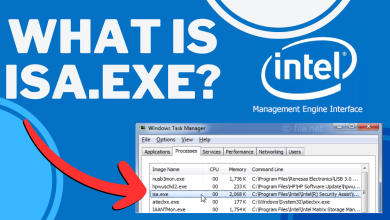What is: ‘.bak’ File Extension and How to Open it?
Many users must have seen a file extension ‘.bak’ with differently named files in their application directory. Every extension has a different job and meaning. Some software automatically creates a copy of your file with this extension whenever the file is saved or crashed. Users are curious about what bat file extension is and what it is used for. In this article, we will discuss the .bak extension and how you can open it if that is possible.

What is .bak File Extension?
BAK stands for Backup File, it is a file extension used by many different applications to store the backup copy. Most applications automatically create the BAK files to store the backup of a file and some will need the manual instructions from users. This file can also be used to edit the copy of the file rather than using the original. It is similar to the naming schemes such as file~, file.old, file.orig and so on.
Microsoft SQL Server also uses a bak file extension to store the backup of the databases. Users can save a backup of their MS SQL databases to a single file with the extension of .bak on the drive and use this file to restore the database to a newly installed SQL server.
Many other applications also use the bak file extensions for saving their backup copies. Some of the common and well-known applications are Google Chrome, HyperCam, MATLAB, Nootepad++, Photoshop, Sony Vegas, SQL Server, TeamViewer Manager, WhatsApp, and Microsoft Word.
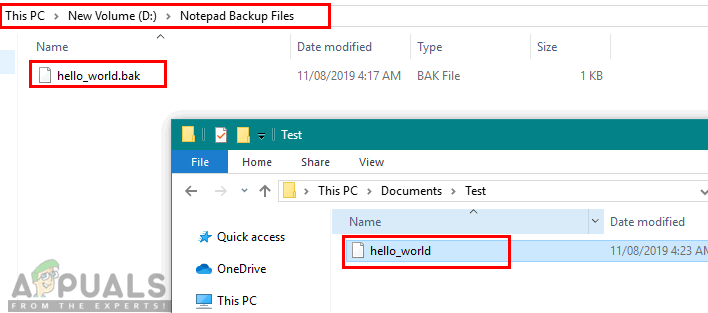
How to Open .bak File?
This file is not like some JPG or TXT files that can be open in any program without any issue. BAK files don’t work the same way as the other files. You cannot open the .bak file of specific software in another one, because every software makes their own specific .bak file for its own use. To show you how it works with a different application, we will demonstrate two methods of two different applications.
Method 1: Use of .bak File in Notepad++
Notepad++ makes the backup files with .bak extension, so users can recover their work if the files get deleted or corrupt. This will only work if the backup option is enabled in the software preferences. If you have it enabled, then follow the below steps:
- Double-click your Notepad++ shortcut or hold Windows key and press S to open search function, type Notepad++ and Enter.
- Click on the Settings menu in Notepad++ and choose Preferences.
- In the left panel, select the Backup option and check the directory path for backup (.bak) files.
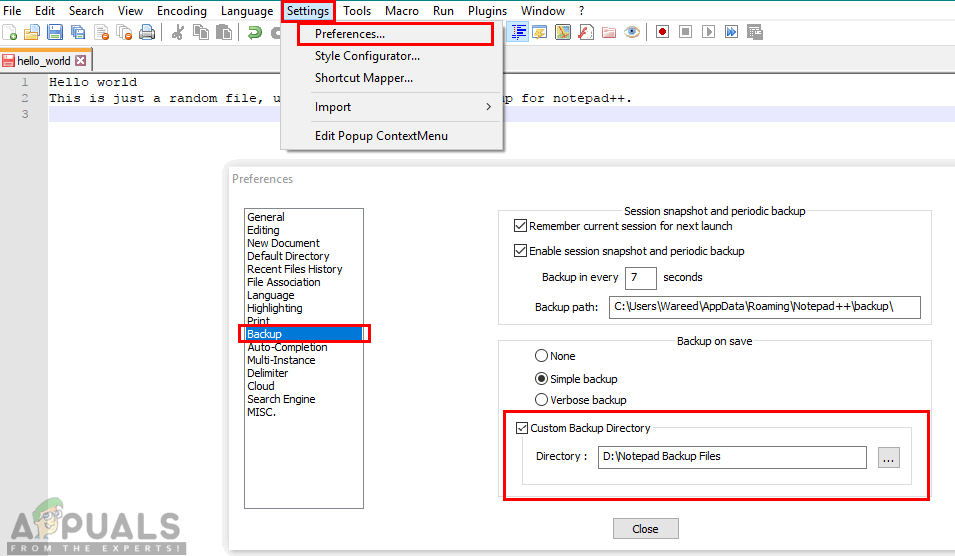
Opening notepad++ preferences to find backup files location - Locate the backup file, right-click on it and choose open with Notepad++.

Opening backup file - You will find all the text in the file before the last save. Now you can save it as a text file or copy the text and use it in another file, that’s up to you.
Method 2: Use of .bak File in Microsoft SQL Server
SQL Server makes a database backup file with the extension of .bak. This backup can be used to restore the database into the newly installed server. Keeping a database backup is always an important part of your work. You can restore the database by using the following steps below:
- Open SQL Server Management Studio through Microsoft SQL Server and connect to your server by choosing the server name.
- On the left panel right-click on Database folder and choose Restore Database.
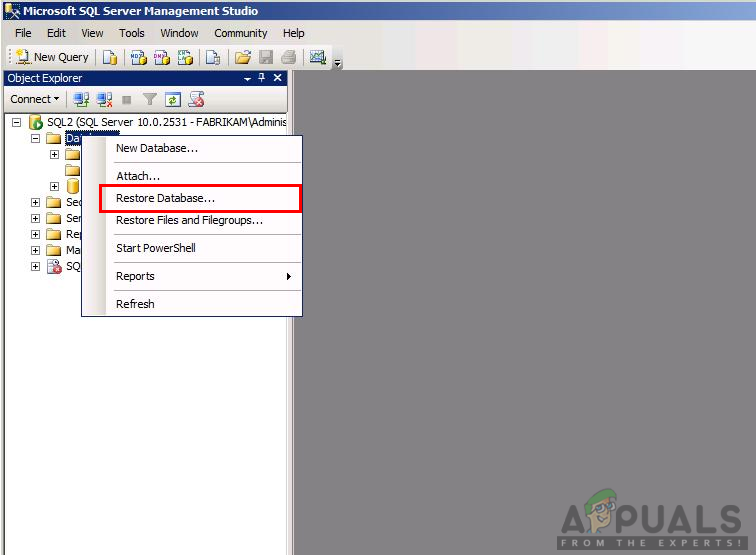
Opening Restore backup option - Restore Database window will open, now select the source for restore as “From Device” and click on the locating file button.

Locating backup file - Now click Add button and locate the database backup folder to restore the database. Choose file type as “Backup File (*.bak, *.tm)” and file name as “DRMS_Config“, then click OK.
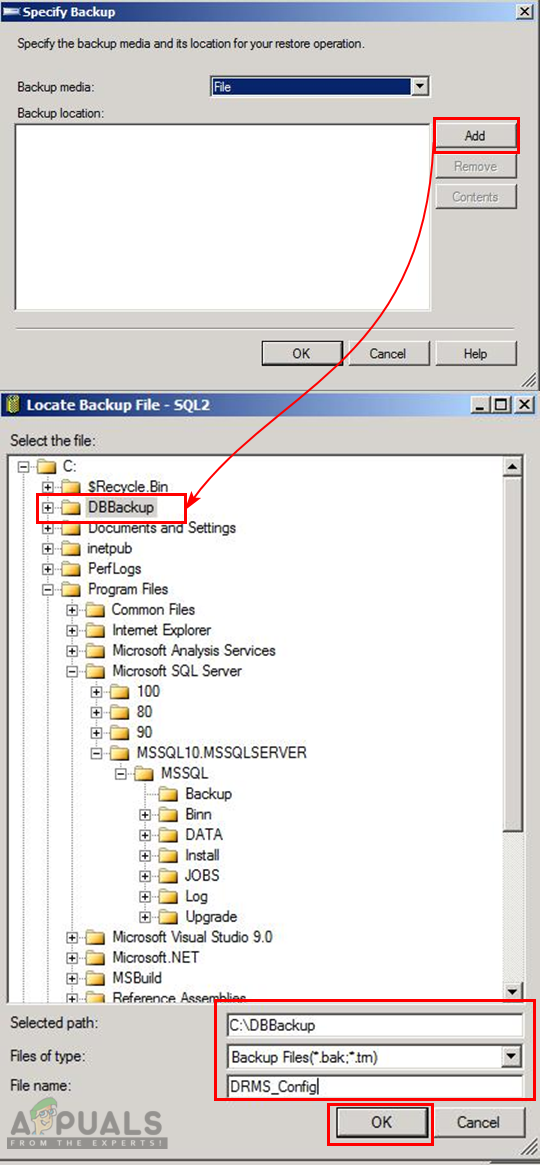
Adding the backup location - In the next window choose your database name in the To database dropdown menu and place a check in the Restore box under Select the backup sets to restore as shown below:
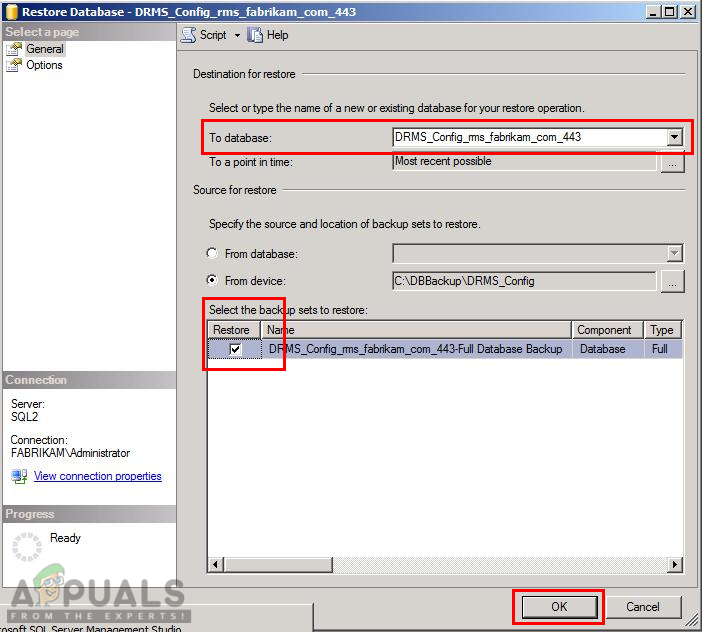
Selecting option and restoring database - Click Ok and once it is completed, a pop-up window will appear for successfully restored notification.



